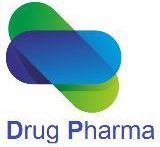
MASTITIS WITH BREASTFEEDING
WHAT IS MASTITIS?
Mastitis is an area of inflammation of breast tissue, in particular, the milk ducts and glands of the nursing mother. It is caused by a cracked nipple or blockage of the ducts due to a problem with the drainage of the milk. Germs from the outside get into and grow in the stagnant milk.
WHAT ARE THE SYMPTOMS?
You may feel a lump and then a sore breast at first. Then follows a red, swollen, tender area (see diagram) with fever, tiredness, weakness, and muscle aches and pains (like having influenza).
WHAT ARE THE RISK?
If treated early and properly, mastitis starts to improve within 48 hours. Doctors regard it as a serious and rather urgent problem because a breast abscess can quickly develop without treatment and the abscess may require surgical drainage, usually by needle aspiration. Apart from the bacterial infection, infection with Candida (thrush) may occur, especially after the use of antibiotics. Candida infection usually causes severe breast pain—a feeling like a hot knife or hot shooting pains, especially during and after feeding. A breast abscess is diagnosed by ultrasound examination.
WHAT IS THE TREATMENT?
- Antibiotics: your doctor will prescribe a course of antibiotics, usually for 10 days. If you are allergic to
- penicillin, tell your doctor.
- Painkillers: take aspirin or paracetamol when necessary for pain and fever.
- Keep the affected breast well-drained.
- Keep breastfeeding: do this frequently and start with the sore side. It is safe to do so.
- Make sure the baby is latched on properly and change feeding positions to drain the milk.
- Heat the sore area of the breast before feeding: have a warm shower or use a warm face washer or a warm hot-water bottle.
- Cool the breast after feeding: use a cold face washer from the freezer.
- Apply cool, washed cabbage leaves over the affected side between feeds (optional).
- Massage any breast lump gently towards the nipple while feeding.
- Empty the breast well: hand expresses if necessary.
- Get sufficient rest: rest when you feel the need to do so and get help in the home.
- Keep to a nutritious diet and drink plenty of fluids.
HOW IT CAN BE PREVENTED?
Breast engorgement and cracked nipples must be attended to. It is important to make sure your milk drains well.
Faulty drainage can be caused by the following reasons:
an oversupply of milk, missed feeds, the breast not being fully emptied (e.g., from rushed feeding, poor attachment or wrong feeding positions), exhaustion, poor nutrition, and too much pressure on the breast (e.g. bra too tight and sleeping face-downwards).
Keep the breasts draining by expressing or by waking the baby for a feed if he or she sleeps for long periods. For an oversupply, try feeding on one breast only at each feed.
Avoiding caffeine and smoking may also help. Golden rule: ‘Heat and drain the breasts.’
NOTE: It is quite safe to continue breastfeeding with the affected breast unless your doctor advises otherwise
